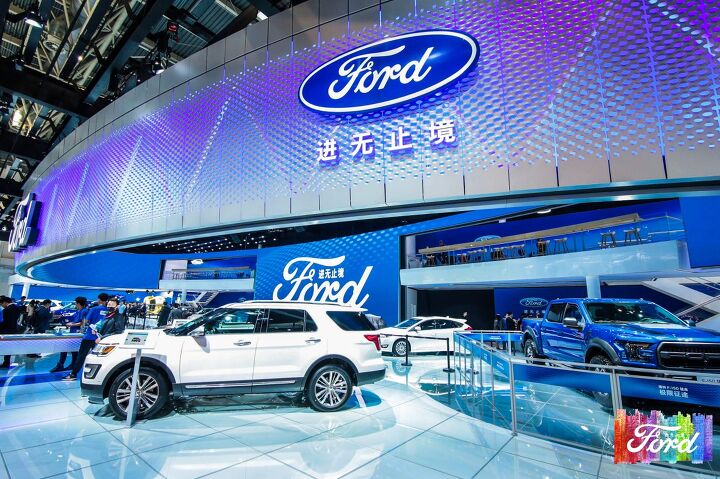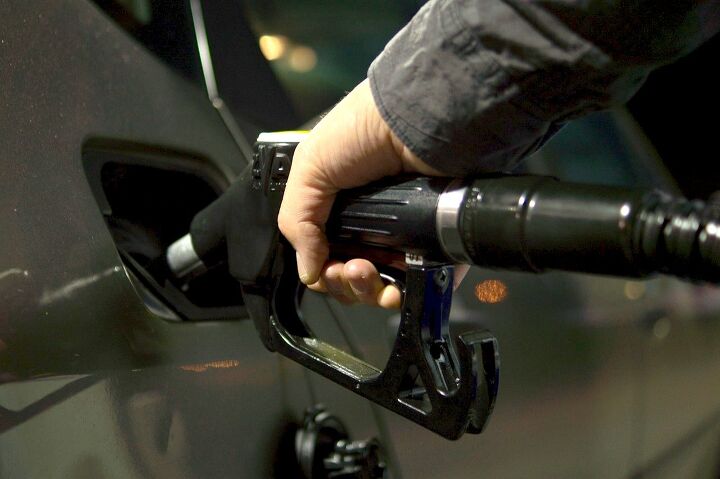#stats
American Automakers Losing Footing in China's Wonky Market
Last week, we looked at how the world’s largest automotive markets are coping. If you’re interested in an abridged version, they could all be doing better. We also noted that China was getting around to summarizing its summer sales data. Well, that ship has since come in, and it was full of corpses. The country has endured three straight months of falling car sales after years of consistent growth.
As the world’s largest automotive market, China impacts just about every other industrialized nation on the planet. Unfortunately, the China Association of Automobile Manufacturers (CAAM) reported that influence helped the market share of U.S. brands fall to 10.7 percent in the first eight months of 2018 versus 12.2 percent just one year earlier. The association’s assistant secretary general, Xu Haidong, said this decline could be attributed to American firms inability to refresh their lineups in a timely manner and definitely had nothing to do with the trade war, anti-American sentiments, or the boycotting of U.S. brands by Chinese consumers.
Drowsy Driving Might Be a Bigger Problem Than Previously Thought
Back in 2014, an American Automobile Association study estimated that tired motorists were responsible for around 328,000 accidents annually — 6,400 of which were fatal. However, unlike drunk driving, there’s no sound metric for assessing the true scope of the problem. Getting tired is something that just sort of happens. People don’t stay out all night not sleeping because it’s fun, the police can’t test for it, and almost nobody is going to say they were dozing off behind the wheel in an accident report — either because they are too embarrassed or stopped feeling tired at the moment of their brush with death.
That makes the issue a bit of a phantom menace. We all know it’s a problem, but the frequency remains debatable. Fortunately, a new study released by AAA this week helps clear things up. Researchers affixed dashboard cameras to 3,593 vehicles in order to monitor the drivers’ faces, then used a PERCLOS-based fatigue monitoring strategy to come to the conclusion that drowsiness is a contributing factor in 10.6 to 10.8 percent of all accidents resulting in significant property damage, airbag deployment, or injury.
Driving Tired Remains a Persistent Problem With One Solution: Study
We’ve all been there. It’s late, we haven’t slept enough, and we’re cruising down a chilly freeway wrapped in warmth and white noise. Then, unexpectedly, we begin to nod off. From here, we can either spring back to a terrified state of consciousness that will sustain us the rest of the journey or we can fall asleep and ultimately destroy our vehicle — and maybe ourselves — in the process.
Drowsy driving is a real problem. But, while we’re always hearing about how it’s just as dangerous as driving drunk, we don’t often see statistics backing that up. That’s mainly because it’s a lot harder to assess someone’s tiredness than it is to give them a breathalyzer and toss them in the back of a squad car. But a 2014 study from the AAA Foundation for Traffic Safety estimated drowsy drivers could contribute to 328,000 accidents annually, with around 6,400 being fatal.
Old Hat: European Sale of Diesel Cars Overtaken by Gasoline for the First Time Since 2009
Diesel-powered passenger vehicle sales have fallen in Europe. Data from the European Automobile Manufacturers Association (ACEA) showed diesel’s year-over-year market share plummeting in the first half of 2017, sinking from 50.2 percent to 46.3 percent of all new car registrations in the EU.
Helped by negative publicity and governmental intervention, it’s the first time diesels have dipped below the 50 percent mark since 2009. ACEA’s figures indicate 152,323 fewer diesel cars sold so far in 2017, attributing some of the decline to a renewed interest in gasoline-powered vehicles. Of course, if you aren’t buying diesel, you don’t have a lot of other options.
Still, deliveries of “alternative” vehicles — which include hybrid, electric, and natural gas-powered automobiles — also rose by more than 35 percent. Those categories now account for 5.2 percent of Europe’s total auto sales.
The EPA Seems Overly Excited About People Buying SUVs Again
The auto industry’s average fuel economy for new vehicles sputtered upwards by 0.5 miles per gallon last year, according to recent data from the Environmental Protection Agency. While that may sound like cause for celebration, let’s not lose perspective. A statistical record high may be noteworthy, but not necessarily indicative of a new upward trend.
First, let’s try to figure out what happened last year to drive the industry average out of a period of mpg stagnation.




















Recent Comments